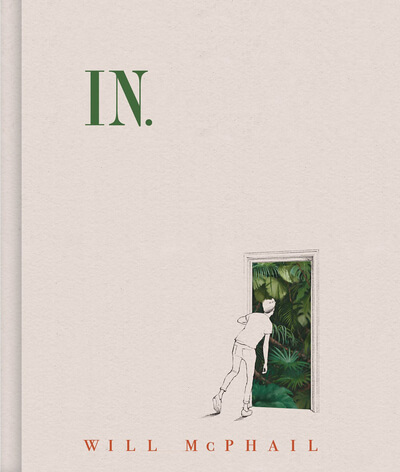January may be a time for resolutions, but it’s also a time for celebrating all we accomplished the year before. We’re treating ourselves to these books as we begin the new year with hope.
Everyone’s a Aliebn When Ur a Aliebn Too
How can something so cute be so devastating? In this comic book, Jonny (Jomny) Sun takes a goofy premise—a cute alien is sent to Earth to document human activity—and milks it for every drop of philosophical and existential wisdom. It’s sweet, silly, sentimental, but also frightening. At first, I was hesitant to choose this book for this month’s theme, but the more I thought about it, the more I realized that its waves of emotion are a treat. It’s an indulgence and a wonder to step outside of your brain—all three pounds of tissue and synapses—and see the world through the eyes of a kind alien. And it feels good, life-affirming and joyous to know that I’m not the only one who’s so pensive about this life thing. This book is a friend—a friend who challenges you, but they do it because they love you.
—Eric, Editorial Intern
The Best of Me
I’ve read everything David Sedaris has ever written. I own every book he’s ever published. So perhaps some will call it “indulgent” or “difficult to justify” when I nonetheless buy his latest collection, The Best of Me, since it’s a compilation of previously published works. But here’s the thing—this isn’t just another retrospective volume of an author’s most popular works, selected on the basis of their fame. Instead, Sedaris chose each piece himself, based on a metric only he could know, and I’m curious to see which wild cards he included. I know, for example, that “Santaland Diaries,” which first launched him to fame on “This American Life” in 1992, is excluded. But that essay from Dress Your Family in Corduroy and Denim where he drowns a mouse in a bucket? It’s there. Surprise, delight, confusion, nausea—I’m eager for whatever reactions this book will incite.
—Christy, Associate Editor
Braiding Sweetgrass
It’s been six years since Robin Wall Kimmerer’s luminous collection of nature essays was first published, and I’ve given away every copy I’ve ever owned. That’s fitting: Braiding Sweetgrass endows its reader with the recognition that the world has offered us endless gifts, leading us first to gratitude and then to minidewak, the giving of our own gifts as thanks and recompense in a “covenant of reciprocity.” Kimmerer’s book inspires courage to fight for the Earth amid climate urgency, reveals new ways of knowing and seeing while protecting Indigenous wisdom and fosters a community that actively seeks to heal humanity’s relationship with the world. I’ll keep giving away copies of this book, but this special edition, reissued with letterpress-printed illustrations to celebrate the 40th anniversary of the fabulous indie press Milkweed Editions, will be a gift I give myself.
—Cat, Deputy Editor
Catherine the Great
Do I need more biographical tomes of powerful, take-no-prisoners women on my shelves? Yes. Yes, I do. There is nothing that relaxes me more than sinking into an enormous book full of royal scandals and opulent palaces— bonus points if someone gets poisoned via byzantine plot. I read Robert K. Massie’s superb biography of Catherine the Great earlier this year, and I have been peppering my poor boyfriend with anecdotes about her ever since. For example: When Catherine fell ill early on in her engagement to Peter, the future emperor of Russia, she would pretend to be unconscious in order to eavesdrop on the people gathered around her sickbed. Massie loves Catherine even more than I do. He explores her glamorous court and magnetic personality with flair and precision in this absolute masterpiece of a biography.
—Savanna, Associate Editor
The Duke and I
I’m still pretty new to the wide and wonderful world of Romancelandia, though most of the books I read for pleasure in 2020 were romance novels. I bounced happily back and forth between contemporary and historical settings, from Helen Hoang’s The Kiss Quotient to Evie Dunmore’s Bringing Down the Duke. The only thing I love more than a happy ending is a new series I can dive in to and get lost in for volume after volume, and a friend who knows this about me recommended Julia Quinn’s Bridgerton books more than a year ago. Now that Shonda Rhimes is adapting the sprawling series for Netflix, I want to make sure I’ve read at least the first few books before I watch the first season of the show, which drops on December 25, so I’m planning to pick up The Duke and I and let it sweep me off my feet and into the new year.
—Stephanie, Associate Editor

























